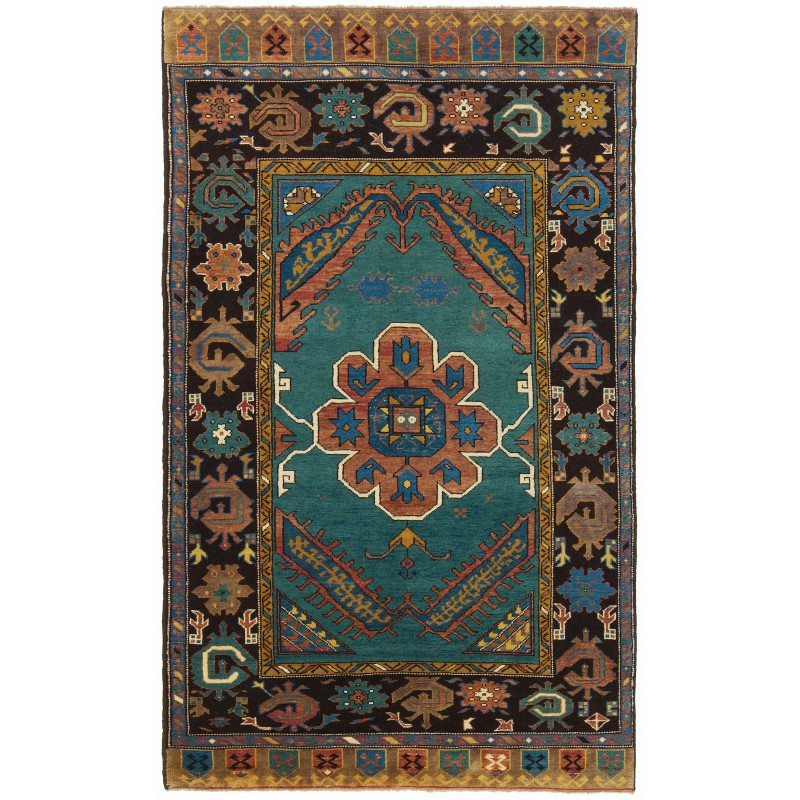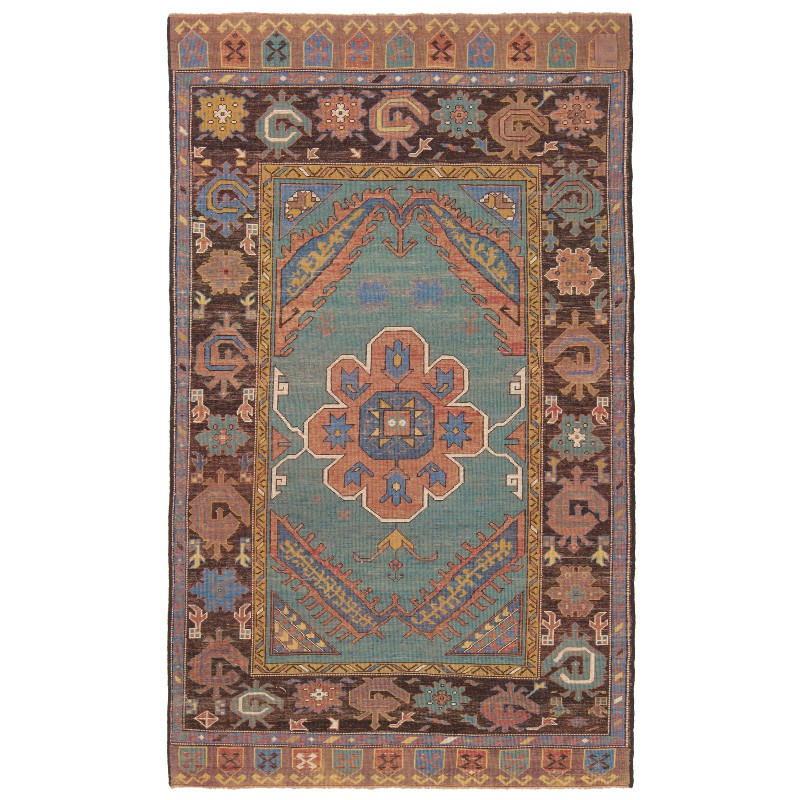



- Stock: In Stock
- Model: C50363
- サイズ: 205cm x 125cm
- SKU: ART363
- Location: istanbul
この絨毯の情報は、書籍「オリエント・スター-カーペット・コレクション」(E. Heinrich Kirchheim、Hali Publications Ltd、1993年178号)から引用されています。これは異例のフレームの図面であり、16世紀の絨毯で、トルコの中央アナトリア、コンヤ地方のデザインです。フレームの図面のディテールは非常に異例であり、一部を残してほぼ閉じた円を形成しています。これは、強く巻きついた葉または田舎の織物でしばしば護符として使用される貝殻である可能性があります。アナトリアの絨毯やキリムは、古代の価値観やアイデアのシンボルを記録していると専門家たちの間で信じられており、それは数千年にわたる伝統であり、産業時代に置き換えられるまで続いていました。アナトリアン・キリムのデザインの伝統は、おそらくパイル織りの絨毯がより貴重に見え、数千年前には既に高い名声を持っていたため、幸運な生存を果たしたと言えます。そのため、キリム織りは長い期間にわたって完全な文化的文脈の中で邪魔されることなく生き残ることができました。この絨毯のデザインは、一連のフレームと柔らかい色で解釈されています。
The source of carpet comes from the book Orient Star – A Carpet Collection, E. Heinrich Kirchheim, Hali Publications Ltd, 1993 nr.178. This is an unusual border drawing, medallion carpet design 16th-century carpet from the Konya region, Central Anatolia area, Turkey. A detail in the border drawing is so unusual that it must be mentioned: it forms an almost closed circle that leaves a small opening to one side. Either it can be a strongly curled leaf or a shell which is often given an amuletic function in rural textiles. Among specialists, Anatolian carpets kilims are believed to record symbols of ancient values and ideas, a tradition that dates back several millennia and was only displaced during the industrial age. The Anatolian kilim design tradition probably owes its lucky survival to the fact that pile-woven carpets look more precious and would already have had a higher prestige value several millennia ago. Kilim weaving was, therefore, able to survive undisturbed within an intact cultural context for a long period of time. The design of this rug is interpreted with a series of borders and soft colors used for this rug.
全部で9色使っています。主な4色は以下です。
- Dark Brawn 316 (羊そのままの色)
- Russian Green 418 (ヘナ - 藍)
- Salmon 536 (茜)
- Celtic Blue 22 (藍)
上の番号は私たちのカラーコードです。()の中は、主な草木染めの材料です。
